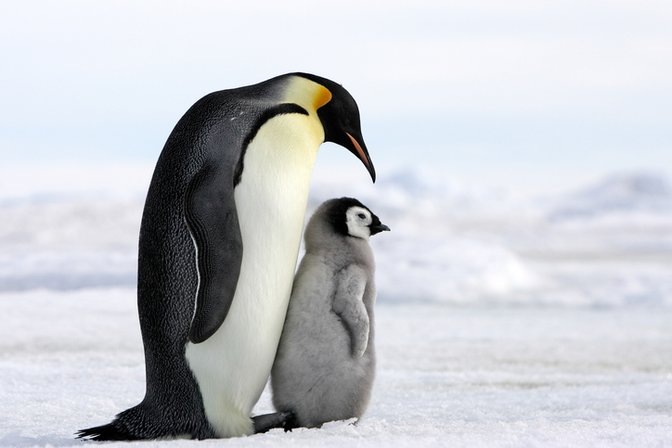The Secrets of Monogamy in the Animal Kingdom
What can we learn from those species that have mastered the art of single-partner relationships?
NATURE & ANIMAL BONDS

Monogamy is the practice of having only one partner, and it turns out that in nature, this type of relationship is actually pretty rare.
Birds are an exception; up to 90% of them have monogamous relationships. However, only 3-8% of mammals, including humans, seek out relationships with one single mate. And it's even more rare when it comes to fish, reptiles or insects.
If your goal is to leave as many descendants as possible–as it is for most animals–then monogamy doesn't seem like the smartest choice. After all, more partners means greater chances of reproducing.
However, that's not always the case.
‘‘For one reason or another, there are a few species that thrive on monogamous relationships. They pick one partner for a season or for life and stick with them.’’
But humans are different from other animals in many ways. We have complex cultures, languages, and societies.
Still, for those of us that choose monogamous relationships, there’s a lesson or two we can learn from the animal kingdom.
Monogamous animals put effort into their relationships
There might be a million differences between human and animal relationships, but there are also some surprising similarities.
Loyalty and support
Species that choose the same partner for life, or even for a season, are often extremely loyal to their mates.
Don’t get it wrong; it’s not that cheating doesn’t happen in these relationships. But still, most of them stay with the same partner after they get together.
For example, some migratory birds travel for months, over hundreds of miles, just to return to their partner every year. And wolves often partner for life. And they spend their lives hunting, raising puppies, and travelling together.
And while animals may not be able to express it in words, it sure seems like they know how to stay loyal to their partners and keep the sparks alive! From owl monkeys to swans, it seems like monogamous animals have unlocked the secrets to maintaining a successful relationship: commitment and support.
Teamwork
Whether it’s time to look for food or to care for their offspring, sharing responsibilities is a signature of monogamous species.
In nature, females usually look after their offspring. But in monogamous relationships, it’s very common for males to be heavily involved too. Male seahorses, for example, take it even further and carry their babies inside their bellies.
And in many other species, both the male and the female take turns searching for food, building their nest, or fighting off predators.

Having only one partner has benefits
Take emperor penguins, for example.
They mate and reproduce in Antarctica under some of the most extreme conditions on Earth. So having someone to go through all of that with can mean the difference between life and death.
The couple takes turns searching for food, caring for their chicks, and protecting each other from the cold and windy weather.
For example, when the female lays her egg, she’s so exhausted and hungry that she rushes to the sea to recharge. So what does she do? She transfers the caretaking responsibilities to the male, who then looks after it for almost two months before she returns.
And when she comes back, just in time for the chick’s hatching, she takes over the parenting responsibilities again. That means it’s her partner’s turn to replenish his energy.
Afterwards, they spend the rest of the season working as a team to find food and look after their chick.
Emperor penguins simply cannot raise a chick on their own. If something happens to their partner, the chances that their offspring will survive are slim to none.
So when their chick is old enough to make it on their own, the parents know it was only possible because of each other.
So, even though animal relationships might look different from ours in many ways, there’s still a lot to learn from them.
Having only one partner has many challenges, but putting in all that work has also a lot of benefits.
So, cheers to our monogamous animal friends and the relationships they’ve inspired!
Sources:
-Klug,H. (2018). Why monogamy? A review of potential ultimate drivers.Frontiers in Ecology and Evolution.
-Kvarnemo, C. (2018). Why do some animals mate with one partner rather than many? A review of causes and consequences of monogamy.Biological Reviews.